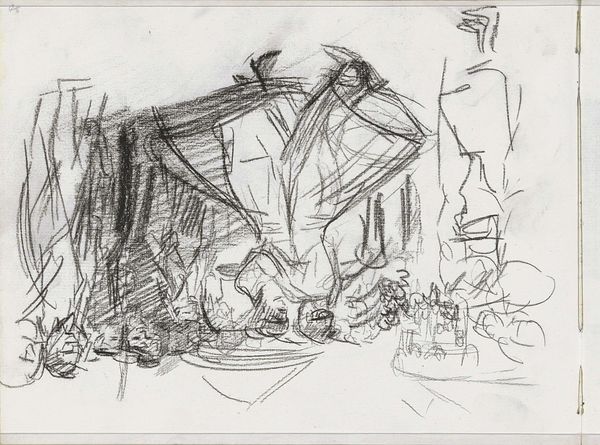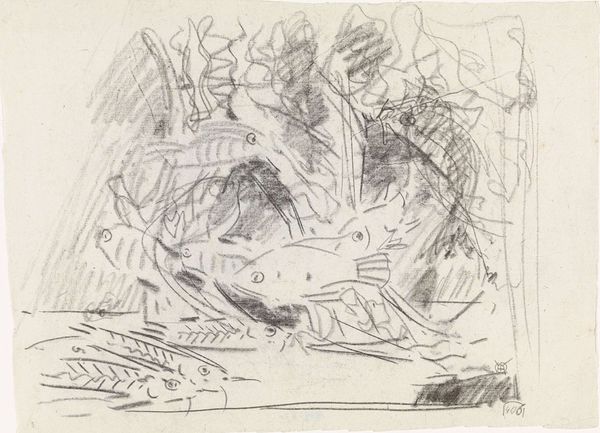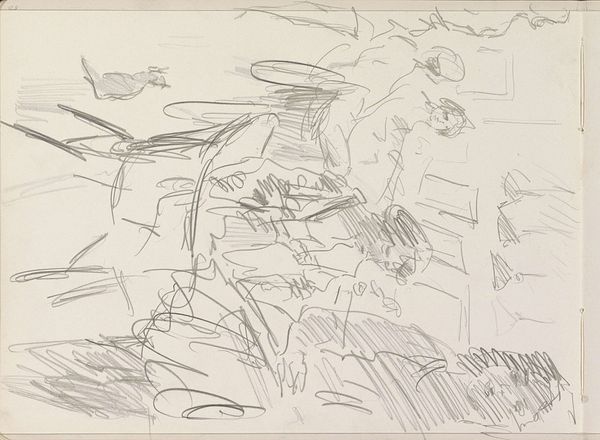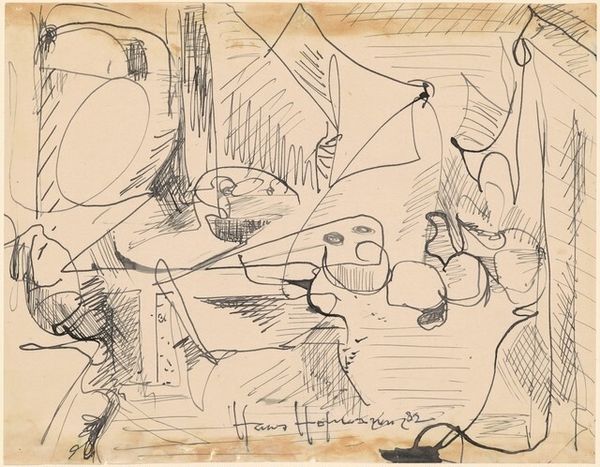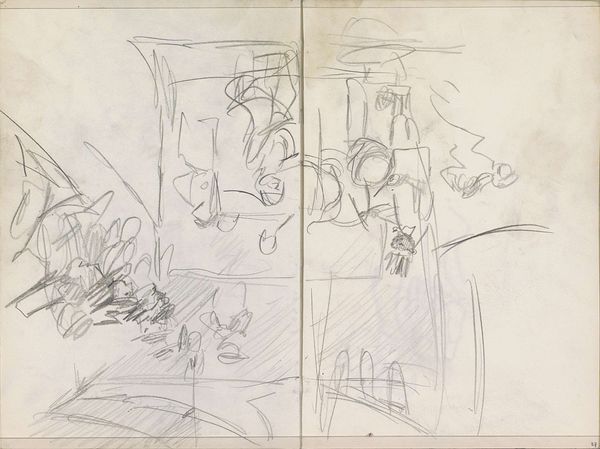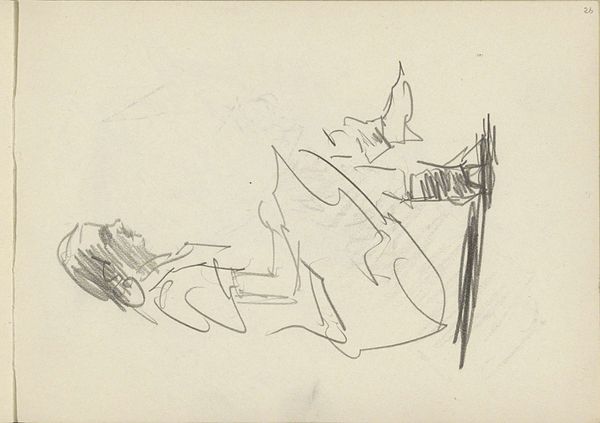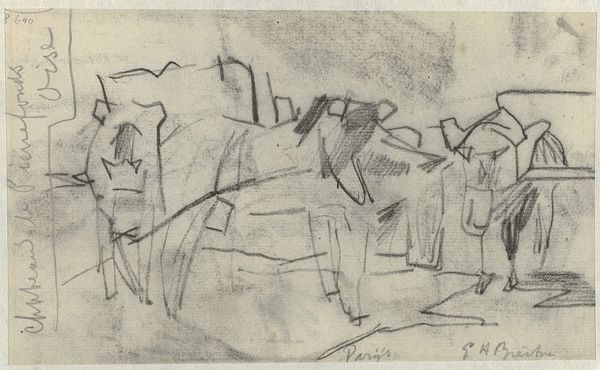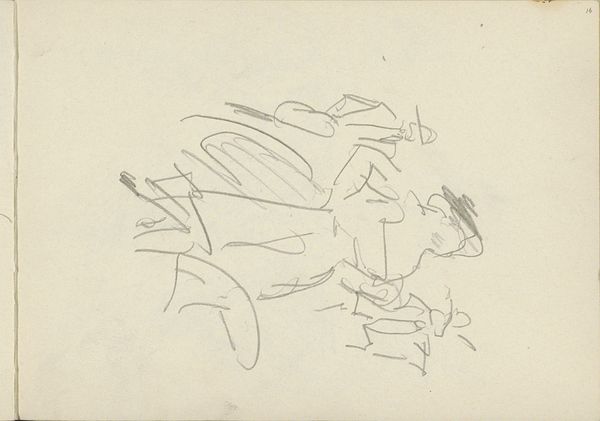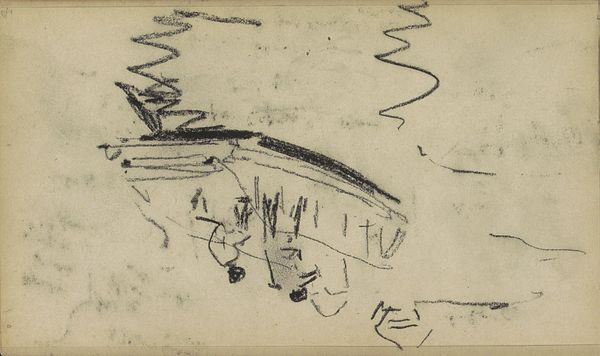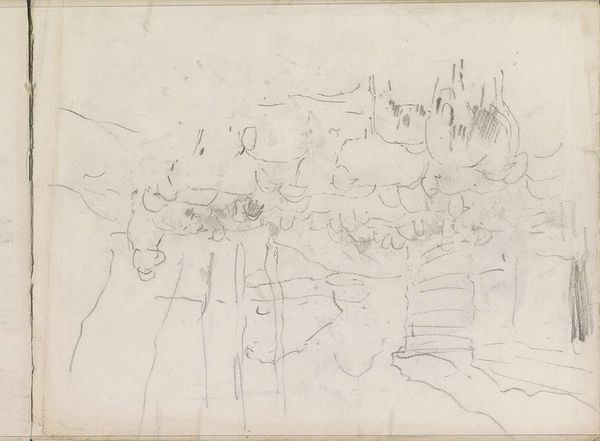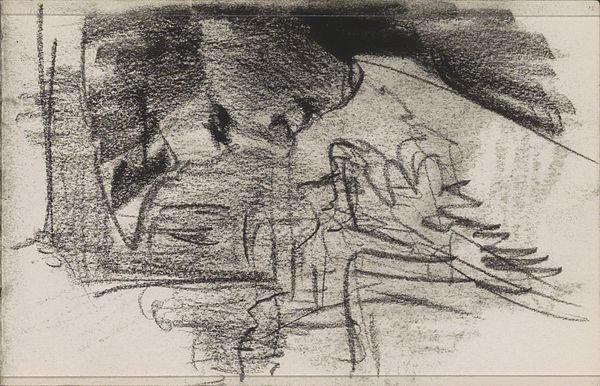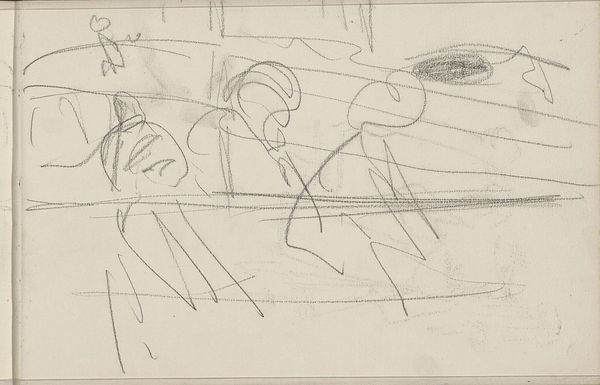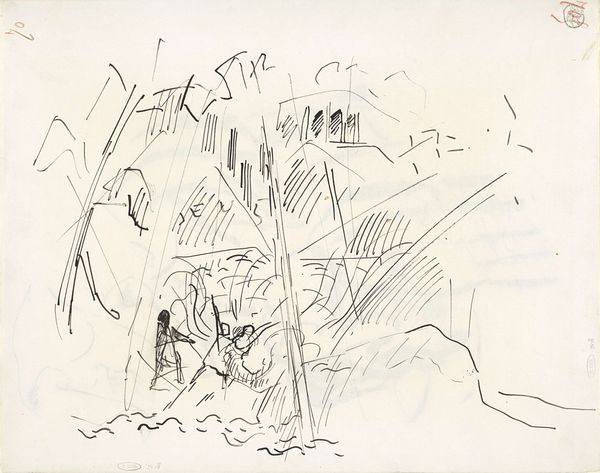
Dimensions: unconfirmed: 299 x 270 mm
Copyright: © Frank Auerbach | CC-BY-NC-ND 4.0 DEED, Photo: Tate
Curator: Frank Auerbach's "Sketch from Titian’s ‘Bacchus and Ariadne’" presents a fascinating study in artistic interpretation. Editor: My first impression is one of barely contained chaos—a frenzy of lines struggling to coalesce into recognizable forms. Curator: Indeed. Auerbach, born in 1931, employs a vigorous drawing style here. It's a play of positive and negative space, built solely from line. Editor: I can’t help but wonder what this rapid sketch says about Auerbach’s relationship to the original work. Was Titian's narrative of divine encounter too loaded with its own history? Curator: Perhaps. The sketch stands as a potent example of how revisiting and reinterpreting classic art can inform and challenge contemporary artistic practice. Editor: Precisely. Auerbach takes a mythologized scene of male triumph and renders it almost illegible, questioning the traditional grand narratives. Curator: In the end, we’re left with the sheer energy of creation, a raw, unfiltered glimpse into the artist's process. Editor: A reminder that even the most venerated stories can be subjected to the restless scrutiny of a new generation.
Comments
tate 6 months ago
⋮
http://www.tate.org.uk/art/artworks/auerbach-sketch-from-titians-bacchus-and-ariadne-t07630
Join the conversation
Join millions of artists and users on Artera today and experience the ultimate creative platform.
tate 6 months ago
⋮
From his days as a student at St Martin's School of Art in London (1948-52), Auerbach has spent many hours making drawings and paintings from works in the collection at the National Gallery in order, he remarked, 'to remind myself of what quality is and what's actually demanded of paintings' (Lampert, p.34). In 1995 the National Gallery's exhibition 'Frank Auerbach and the National Gallery: Working after the Masters' demonstrated the importance of drawing to Auerbach's method and the extent to which he used his numerous studies of paintings after Rembrandt, Titian and Rubens to help him compose his own figure studies and landscapes. This group of three sketches (T07628-T07630) made after Titian's Bacchus and Ariadne (1521-3) in the National Gallery was part of a commission from David Wilkie (1921-92). Wilkie had become fascinated with the work of the Italian Renaissance artists following a study of the Vatican's collection in Rome in the mid 1940s. He already collected paintings by Modern British artists, and in 1965 commissioned Auerbach to paint a version of Titian's Tarquin and Lucretia in the Akademie der Bildenden Künst, Vienna (private collection). This resulted in two paintings, Study after Titian I (Tate T06683) and Study after Titian II (Tate T06684). Auerbach drew this sketch in front of the painting in the National Gallery. This sketch is lightly drawn, unlike the other two, and maps the elliptical extension of the main group as Bacchus leaps from his chariot. The three drawings (T07628-T07630) pick out different aspects of Titian's construction of this picture. Hughes suggests that 'The specifics of the story take second place to an expression of the raw energy and emotion of the Titian, revealed paradoxically through the formal rigour of geometry' (Hughes p.31). The spontaneity of the sketch and bold use of pencil confirms this statement. Auerbach may have used this outline drawing as a preparatory study for his oil painting after Bacchus and Ariadne which he completed in 1971 (Tate T06687). Further reading:Robert Hughes, Frank Auerbach, London 1990Catherine Lampert, Norman Rosenthal and Isabel Carlisle, Frank Auerbach Paintings and Drawings 1954-2001, exhibition catalogue, Royal Academy of Arts, London 2001Colin Wiggins, Frank Auerbach and the National Gallery: Working after the Masters, exhibition catalogue, National Gallery, London 1995, reproduced p.30 Heather BirchallJanuary 2002
